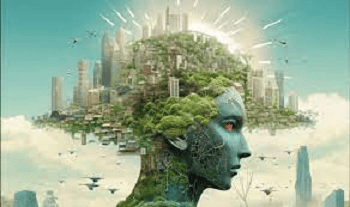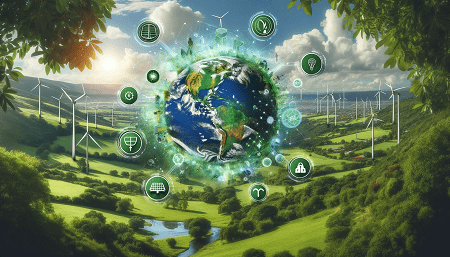sustainable technology of 2200
sustainable technology of 2200 ? Sustainable Technologies of 2200: A Vision of the Future By the year 2200, sustainable technology will likely be deeply integrated into every aspect of human life. Here are some potential advancements: Energy Materials Agriculture Transportation Environmental Restoration Healthcare Important Considerations: By 2200, sustainable technology could be the key to creating a more equitable, prosperous, and environmentally friendly world. However, it’s important to remember that these are just predictions, and the future of technology is always uncertain. Would you like to explore any of these potential technologies in more detail?Sources and related content What is sustainable technology of 2200 ? By the year 2200, sustainable technology will likely be deeply integrated into every aspect of human life. Here are some potential advancements: Important Considerations: By 2200, sustainable technology could be the key to creating a more equitable, prosperous, and environmentally friendly world. However, it’s important to remember that these are just predictions, and the future of technology is always uncertain.Sources and related content Who is required sustainable technology of 2200 ? Sustainable technologies of 2200 will be required by everyone. Here’s why: In essence, sustainable technologies won’t be a choice in 2200; they will be a necessity for the continued well-being of humanity and the planet. When is required sustainable technology of 2200 ? Sustainable technologies of 2200 will be required immediately. Here’s why: In essence, the need for sustainable technology is not a future concern; it’s a present imperative. We must act now to build a sustainable future for generations to come.Sources and related content COURTESY : Future Business Tech Where is required sustainable technology of 2200 ? Sustainable technologies of 2200 will be required everywhere. In essence, the need for sustainable technology transcends geographical boundaries. It’s a global imperative to ensure a sustainable future for all. Sources and related content How is required sustainable technology of 2200 ? Sustainable technologies of 2200 will be required through a multifaceted approach. By combining these approaches, we can create a system where sustainable technologies are not just a choice, but an integral part of our economy, society, and daily lives.Sources and related content Case study is sustainable technology of 2200 ? Case Study: The Self-Sustaining Eco-City of Neo Terra (2200) Background: By 2200, the escalating effects of climate change have necessitated radical shifts in urban living. Neo Terra, a sprawling metropolis nestled amidst a revitalized Amazon rainforest, exemplifies a successful transition to a fully sustainable urban ecosystem. Key Sustainable Technologies: Social and Economic Impacts: Challenges and Considerations: Conclusion: Neo Terra serves as a model for sustainable urban development in the 22nd century. By embracing cutting-edge technologies, prioritizing environmental stewardship, and fostering a strong sense of community, it demonstrates that a harmonious coexistence between humans and the natural world is possible. Note: This case study is a fictional representation of potential future developments. While the technologies described are based on current research and projections, their actual implementation and impact may vary. Would you like to explore a specific aspect of this case study further, such as the social implications, economic challenges, or a particular technology in more detail?Sources and related content COURTESY : Future Tech Enthusiast White paper on sustainable technology of 2200 ? White Paper: Sustainable Technologies of 2200: A Vision for a Thriving Future 1. Introduction By the year 2200, humanity will face unprecedented challenges: a rapidly changing climate, resource depletion, and a burgeoning global population. The continued survival and prosperity of our civilization will hinge on the development and widespread adoption of sustainable technologies. This white paper explores a vision of the future, outlining key technological advancements and their potential impact on society. 2. Key Technological Pillars 3. Social and Economic Implications 4. Challenges and Considerations 5. Conclusion The future of humanity depends on our ability to develop and deploy sustainable technologies. By embracing innovation, investing in research and development, and fostering international cooperation, we can create a future where human civilization thrives in harmony with the planet. Disclaimer: This white paper presents a vision of the future based on current scientific understanding and technological trends. The actual development and implementation of these technologies may vary. Note: This is a sample white paper. For a more comprehensive analysis, further research and expert input would be required. Industrial application of sustainable technology of 2200 ? By 2200, industrial applications of sustainable technology will be ubiquitous, transforming how we produce and consume goods. Here are some key examples: 1. Energy Efficiency & Decarbonization: 2. Resource Efficiency & Circular Economy: 3. Automation & Artificial Intelligence: 4. Nanotechnology & Advanced Materials: 5. Biotechnology & Biomimicry: 6. Green Logistics & Supply Chains: Key Considerations: By embracing these sustainable technologies, industries can play a vital role in mitigating climate change, conserving resources, and building a more sustainable and equitable future.Sources and related content Research and development of sustainable technology of 2200 ? By 2200, research and development (R&D) in sustainable technology will be a cornerstone of human civilization. Here’s a glimpse into the likely focus areas: 1. Advanced Energy Systems: 2. Materials Science and Nanotechnology: 3. Biotechnology and Synthetic Biology: 4. Environmental Restoration and Remediation: 5. Artificial Intelligence and Machine Learning: Key Considerations: By investing in cutting-edge research and development, we can pave the way for a sustainable future where human civilization thrives in harmony with the environment.Sources and related content COURTESY : astris References ^ Jump up to:a b Michael Tolson MBA, LEED, AP. “Green Homes vs Traditional Homes”. buildipedia.com. Retrieved 2015-09-02. ^ Huesemann, Michael H.; Joyce A. Huesemann (2011). “Chapter 13, “The Design of Environmentally Sustainable and Appropriate Technologies””. Technofix: Why Technology Won’t Save Us or the Environment. Gabriola Island, British Columbia, Canada: New Society Publishers. ISBN 978-0-86571-704-6. ^ Vallero, Daniel A. (2008). Sustainable design : the science of sustainability and green engineering. Brasier, Chris. Hoboken, N.J.: John Wiley. ISBN 978-0-470-13062-9. OCLC 173480533. ^ Cabezas, Heriberto; Mauter, Meagan S.; Shonnard, David; You, Fengqi (2018). “ACS Sustainable Chemistry & Engineering Virtual Special Issue on Systems Analysis, Design, and Optimization for Sustainability”. ACS Sustainable Chemistry & Engineering. 6 (6): 7199. doi:10.1021/acssuschemeng.8b02227. ^ Jump up to:a b D. Vallero and C. Brasier (2008), Sustainable Design: The Science of Sustainability
sustainable technology of 2200 Read More »







